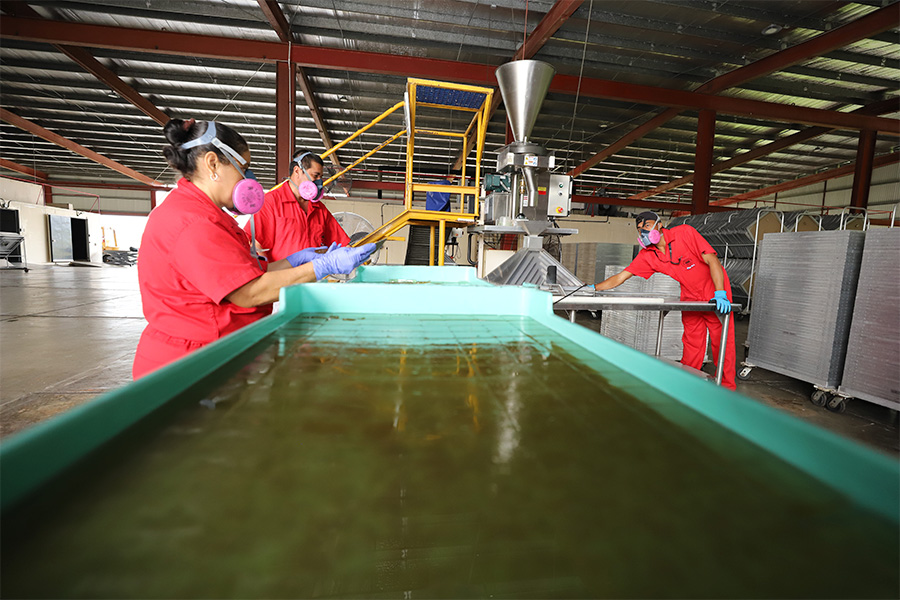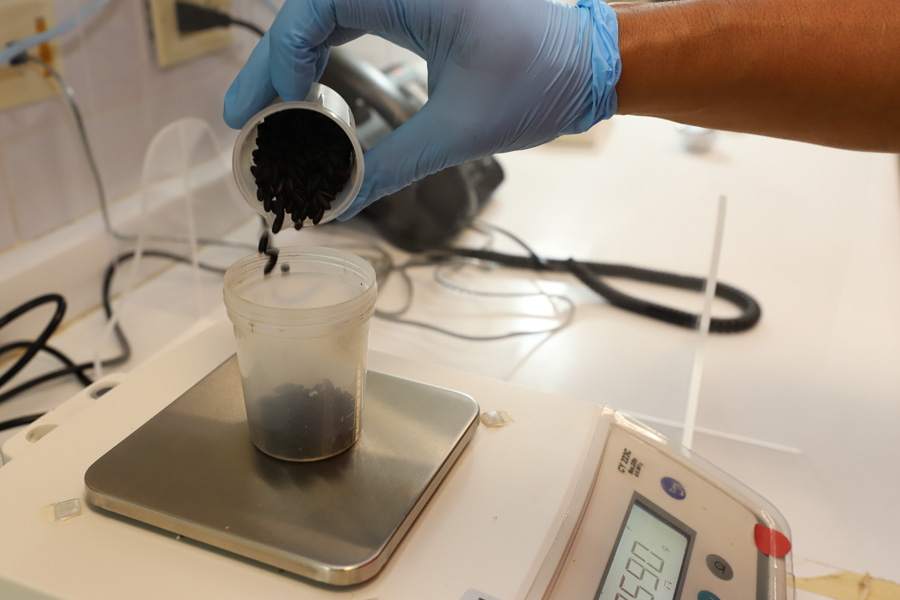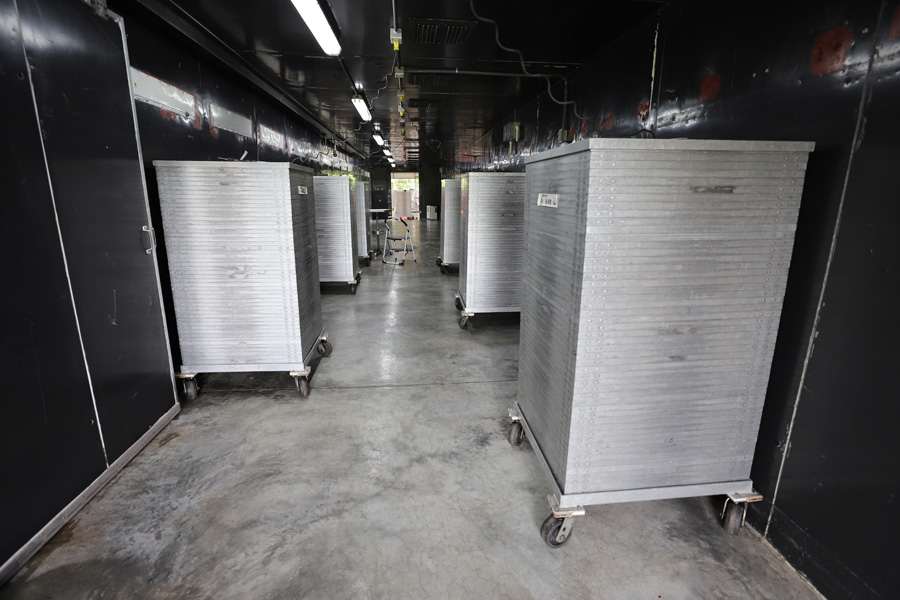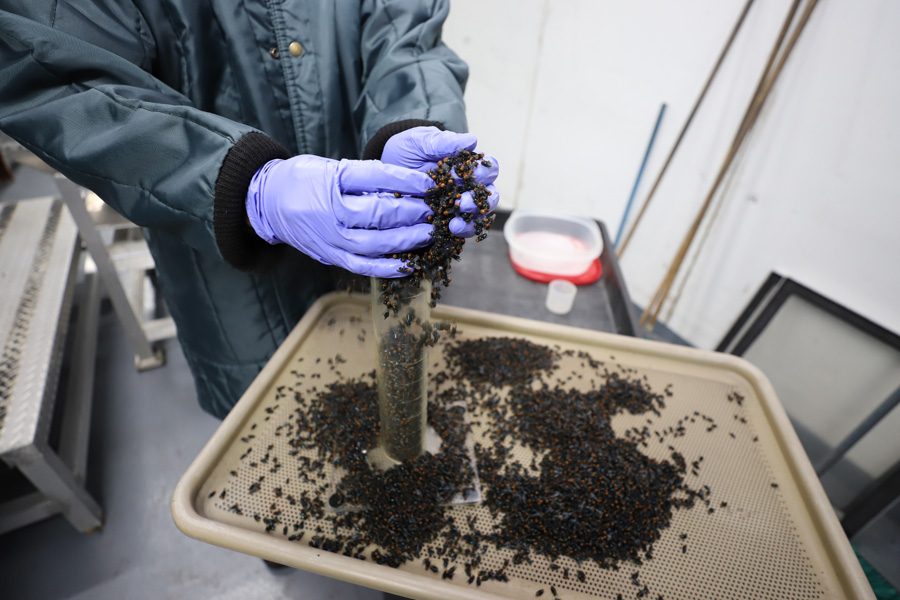Dispersal
The COPEG Dispersal Center is the emergency facility for sterile screwworm flies. It is located at Tocumen International Airport and has been operational since November 1998.
Its main objective is to receive sterile screwworm pupae from the Production Plant and continue the insect’s life cycle until they reach adulthood, at which point they are aerially dispersed over the Permanent Biological Barrier Zone.
The dispersal center is made up of several departments, which are listed below:

Technical Operations:
Responsible for continuing the production process until the insect reaches its adult fly stage.

Quality Control:
The tests include: pupal weight, sex ratio, emergence rate, flight ability, pupal yield, and fly longevity with and without food.
This team is responsible for determining the number of flies needed for each flight based on the data collected during these tests.

Dispersal:
This activity involves the use of special dispersal box systems installed in each aircraft, along with a computerized navigation system that provides flight scheduling information and dispersal flight reports. These reports include flight data such as altitude, temperature, dispersal machine revolutions (from both the pilot and the disperser), flight duration, fuel usage, miles traveled, and relevant observations.
Process
1. The pupal food is prepared using a mixture of water, sugar, and added carrageenan.
2. Five liters of food are served in each tray.
3. The pupae arrive at the Dispersal Center from the Sterile Fly Production Plant in Pacora.
4. The quality control analyst checks the temperature and collects samples from each cooler.
5. The dispenser is calibrated to release 450 ml per dose.
6. The production assistant fills each sieve with 450 ml of pupae and adds a piece of gel (food).
7. Once the tower of sieves is complete, a lid and fan are placed on top so it can be transferred to the emergence chamber.
8. Towers are labeled sequentially with their cooling time.
9. A technician continuously monitors all chambers through a system that regulates temperature and relative humidity.
10. When towers reach a 94.50% emergence rate, they are moved to the antechamber at 10°C to 15°C and then to a cold room at 3°C to 5°C to stun the flies.
11. The flies are then collected.
12. Five liters of flies are measured and placed in trays labeled with their cooling time.
13. The required number of liters needed to fill the containers with flies is calculated.
14. The containers are transported to the aircraft using a forklift and placed onto the dispersal bases inside the plane.
15. A flight plan is issued for the assigned route, and the aircraft is then cleared for takeoff to carry out the dispersal of the sterile flies.
16. While the flies are being dispersed, quality control analysts at the Dispersal Center evaluate the pupae samples arriving from the production plant (sex determination and pupal viability). Additionally, tests are conducted on flight ability, longevity, sexual aggressiveness, and oogenic development during the adult phase.
17. Simultaneously, the technical team is responsible for washing and drying the towers to have everything ready to restart the process.




